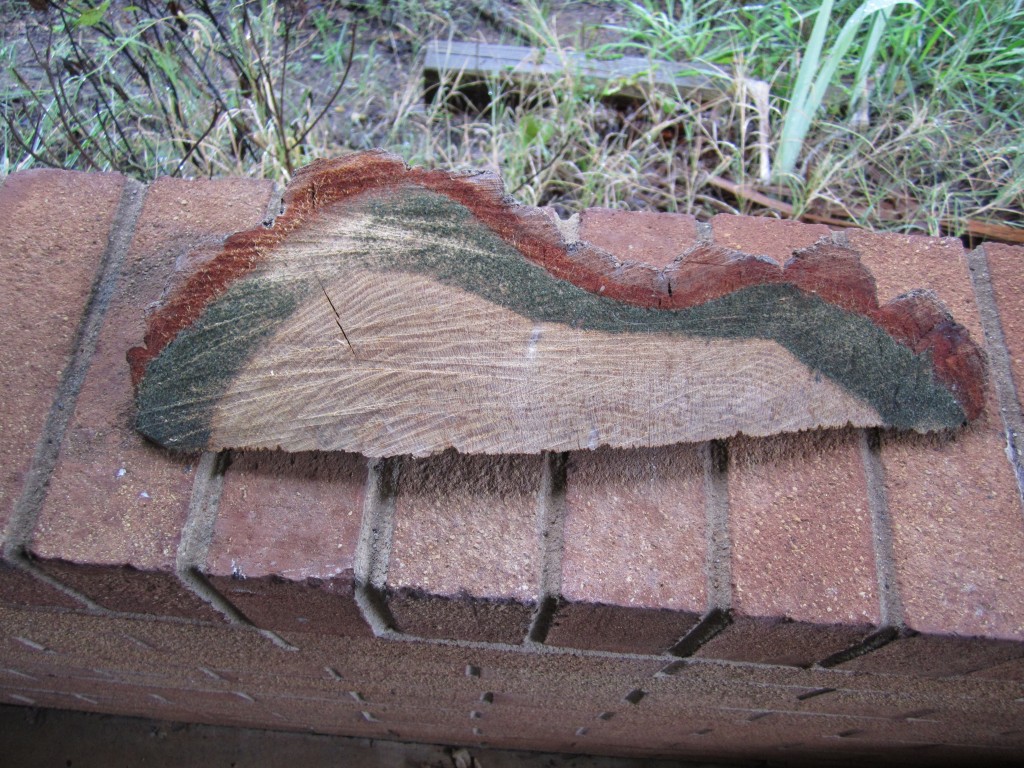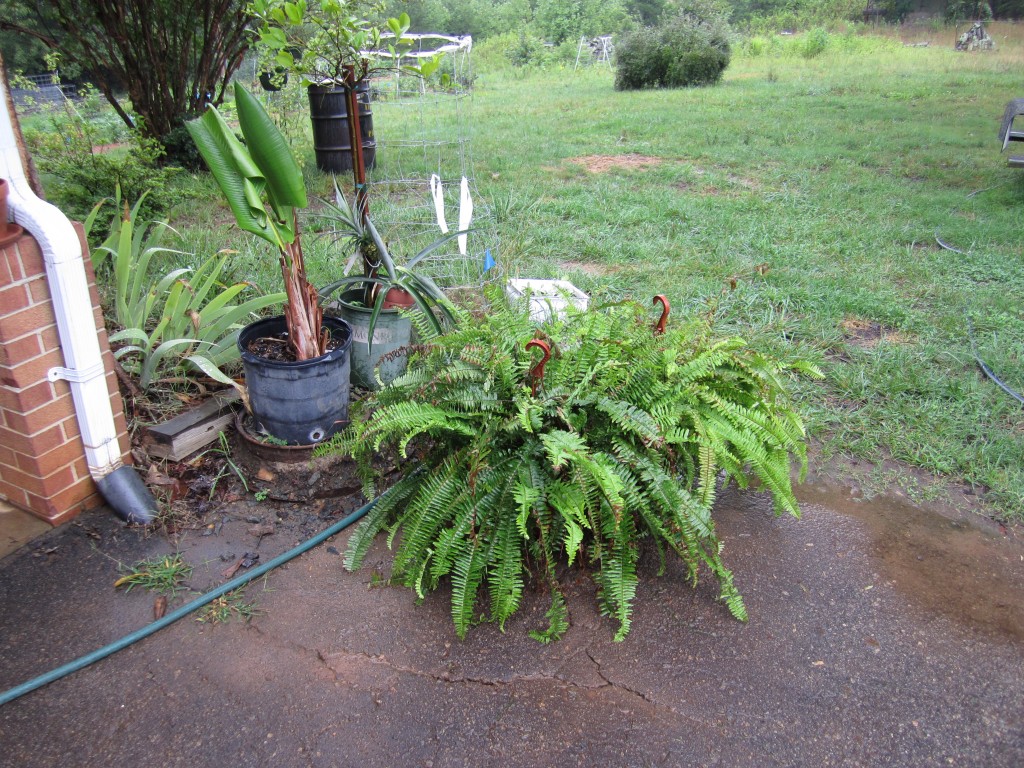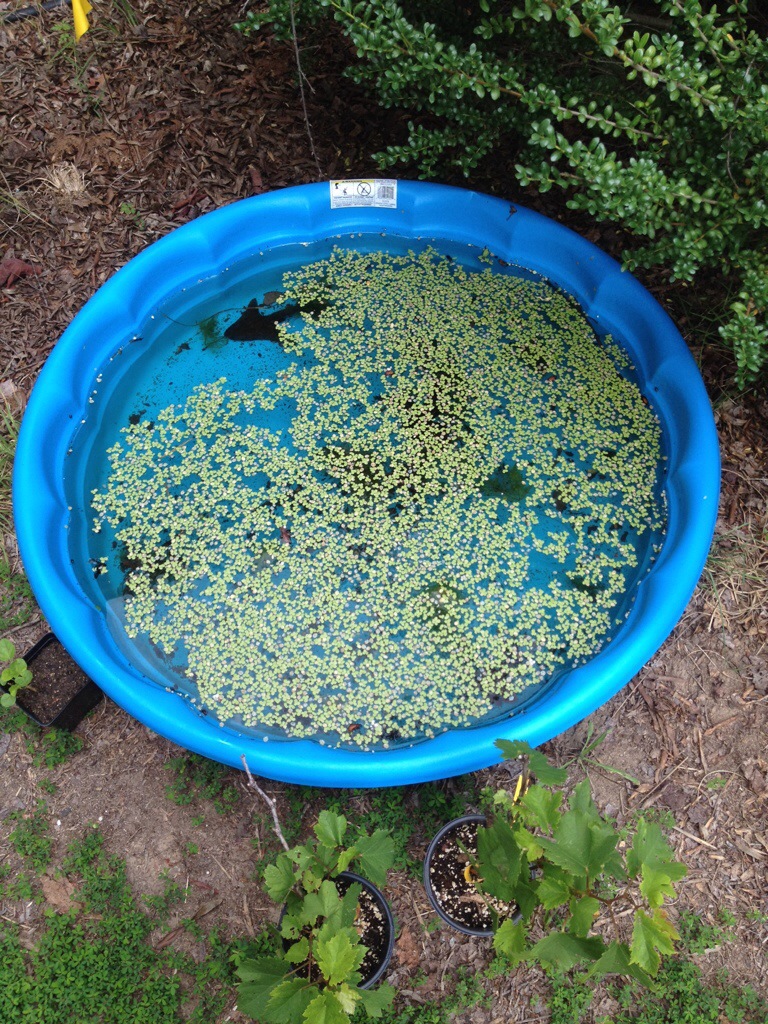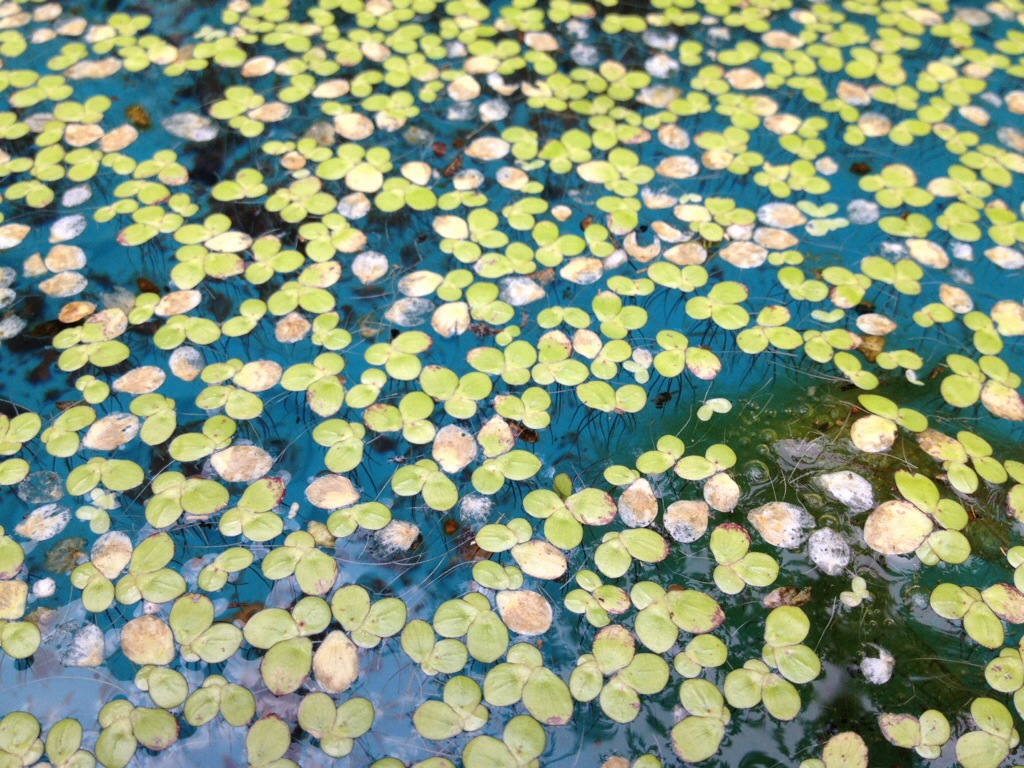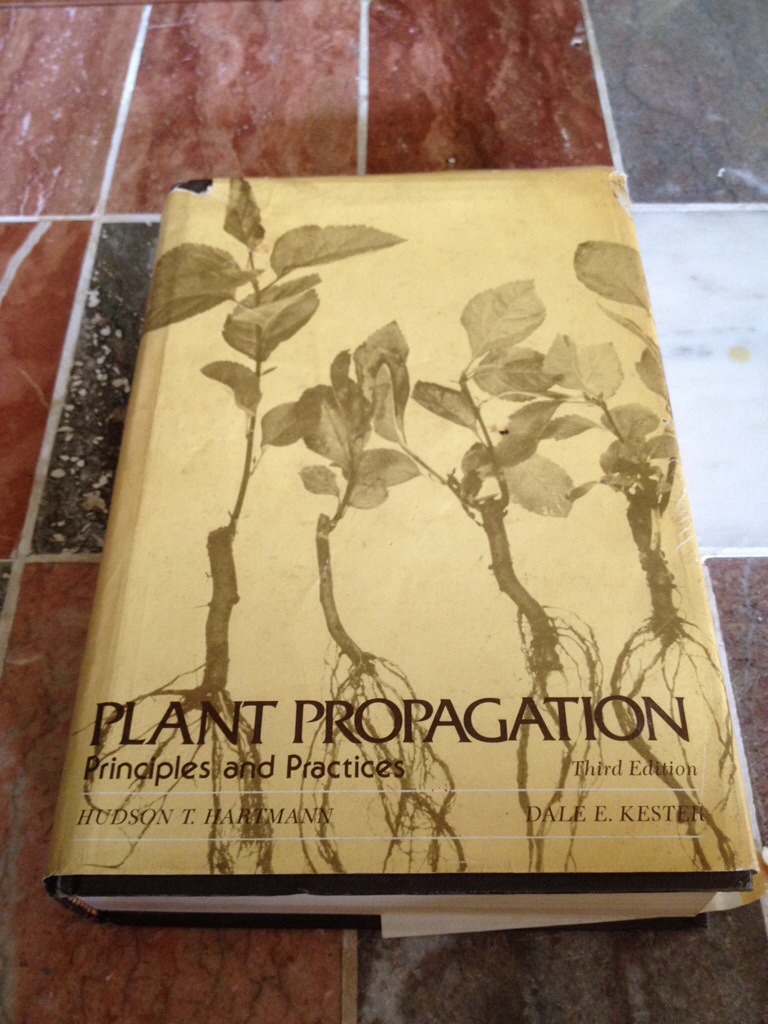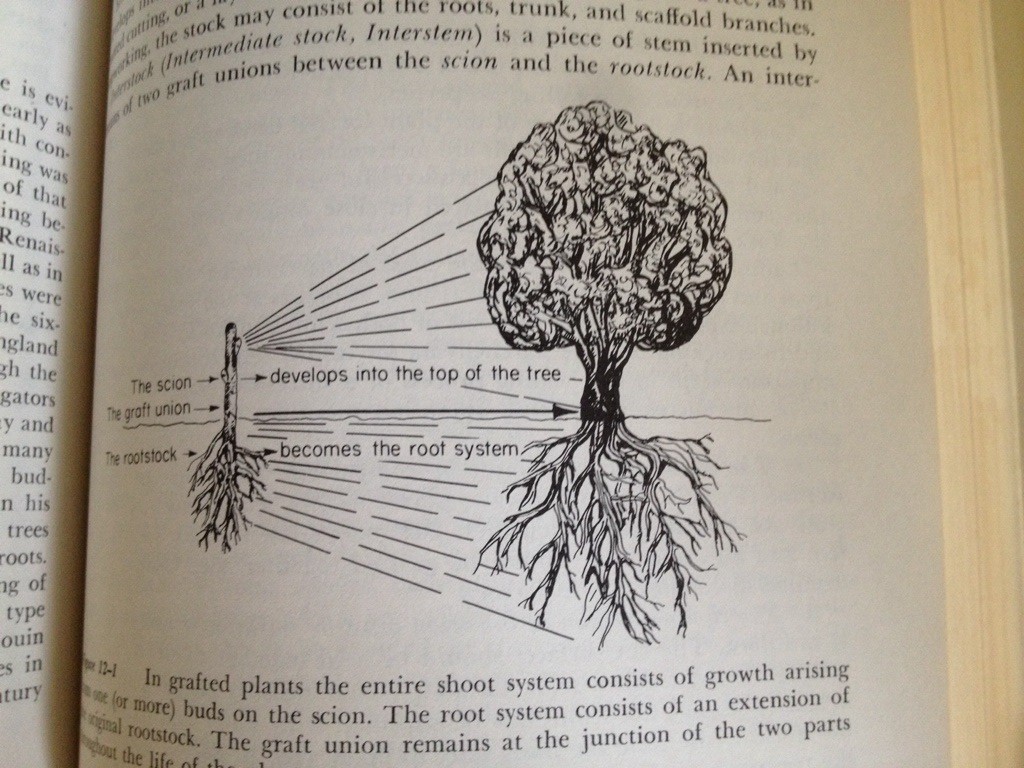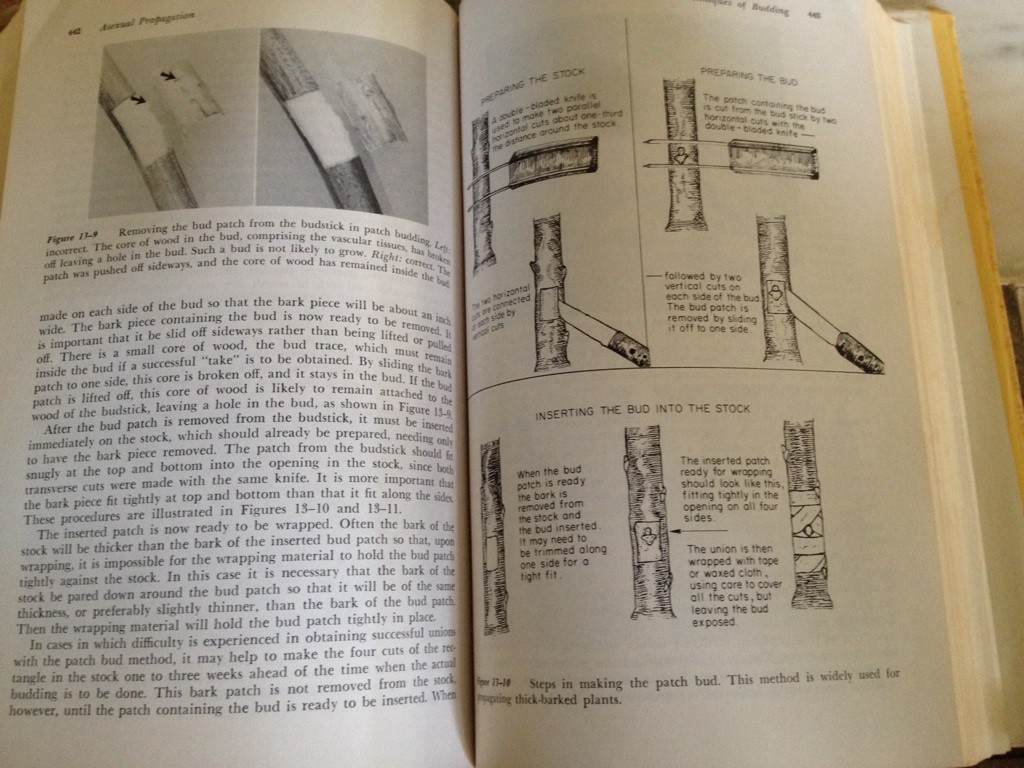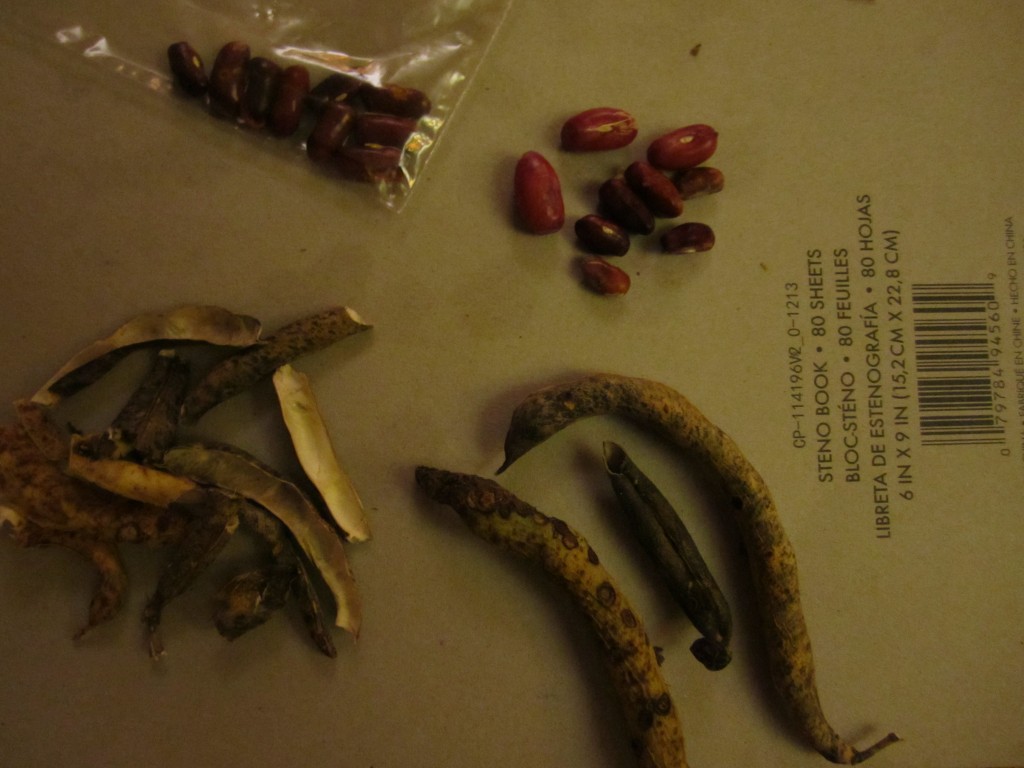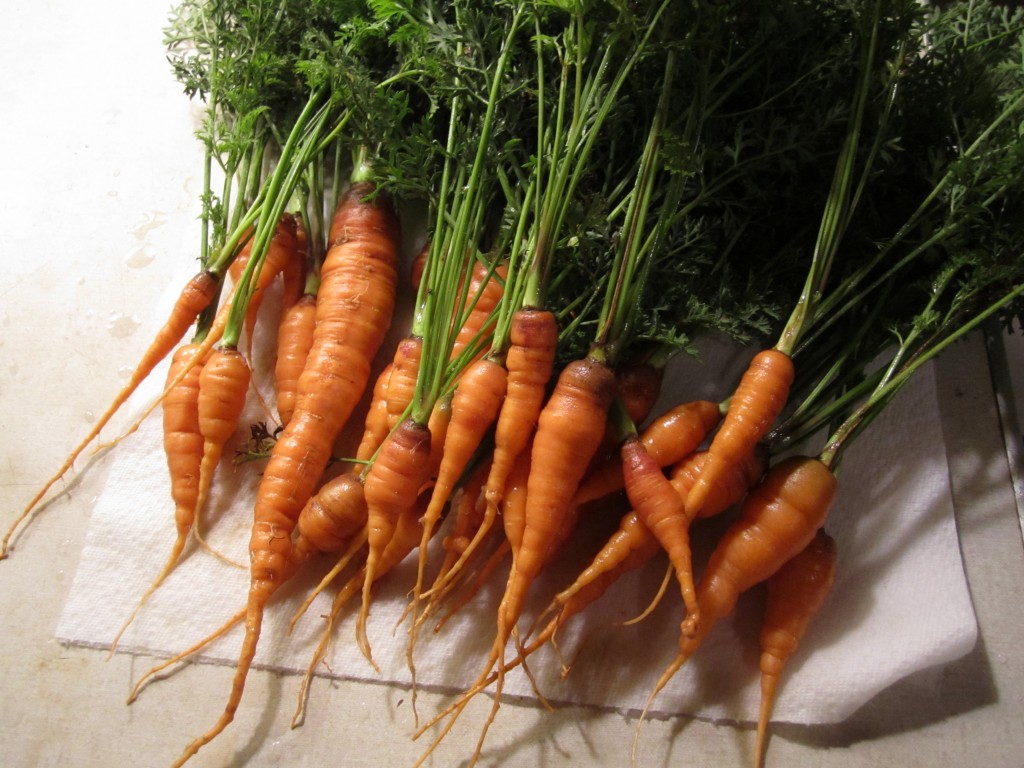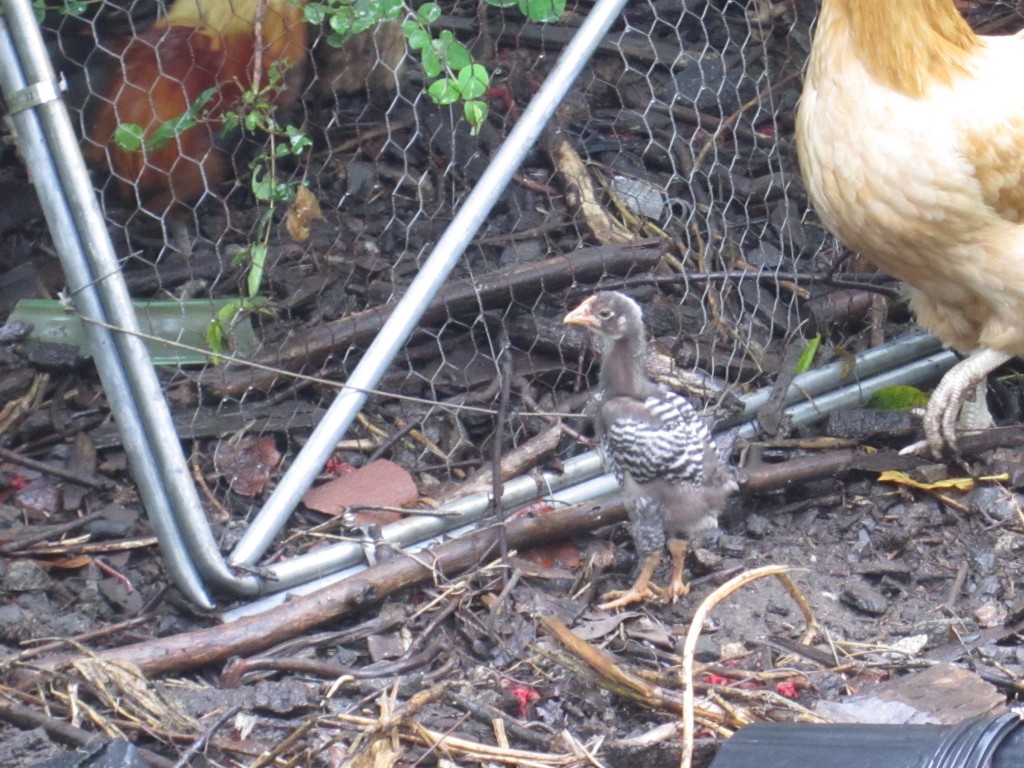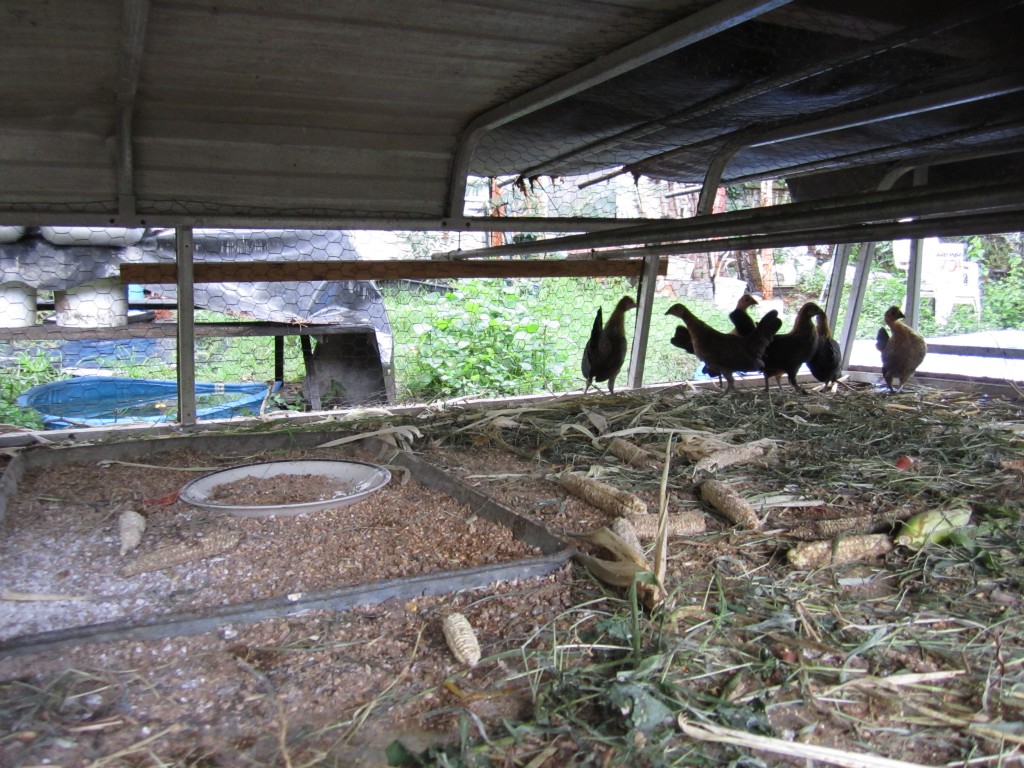well, finally we’re getting a steady, lengthy, solidly wet rain. i feel like it’s been months since the garden swales have filled up with water, and the moisture in the air is thick and sticky (luckily the weather has turned a little cooler). as i was walking around today i noticed that everything was super wet and saturated, which can only come from a nice, long rain. it must have rained most of the day when i was at work and coming home i found muddy puddles all around the yard. the geese seemed perfectly happy in the rain, either sleeping under their tarp or swimming in their pool. the chickens, on the other hand, didn’t have a great day. since they’re not water birds like geese they look hilariously scruffy and horrible when they’re wet. they hid in their house most of the time, but came running out into the rain every time they thought i was coming by with their food.
the cement floor of the carport always starts to sweat when there is a lot of moisture in the air, and i noticed that some decorative wood slices had begun to grow a beautiful green fungus right beside the bark. this made me think about our shittake mushroom logs and whether today’s weather has given them a boost in colonization… hopefully they’ll begin fruiting soon!
perhaps the greatest thing about the rain is the fact that we don’t have to water the garden! plants that are under the carport can come out for a drink and as i said, the swales filled up. so did our little frog pond right by the garden and bolt enjoyed drinking out of it as we went on his afternoon walk.
tonight jason and i are hearing a frog chorus that is much louder than what we’ve heard any other night.
and on top of all of this, rain is just plain cozy. it’s a time for introspection and taking it slow. i love rainy days!
.:.
